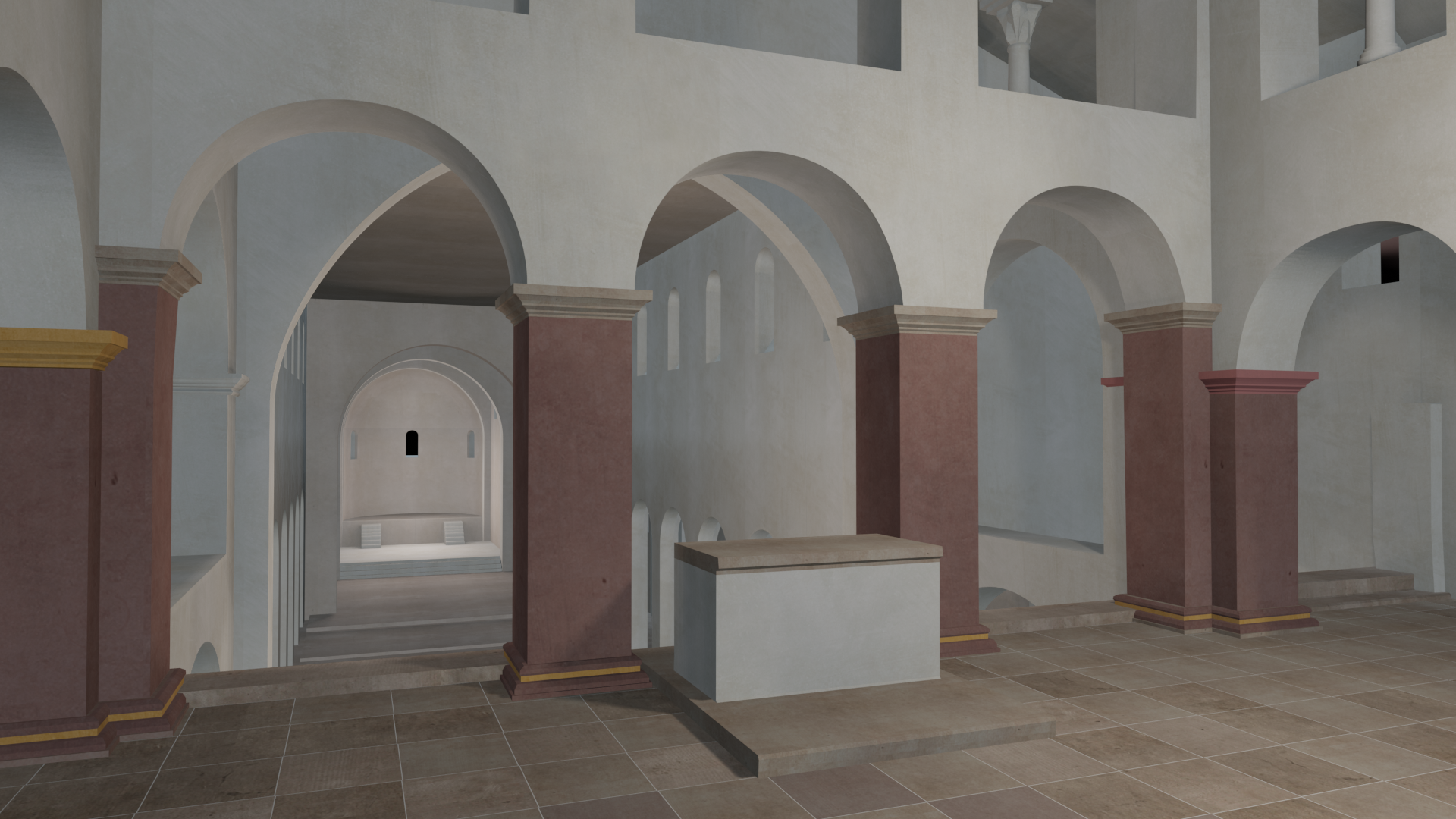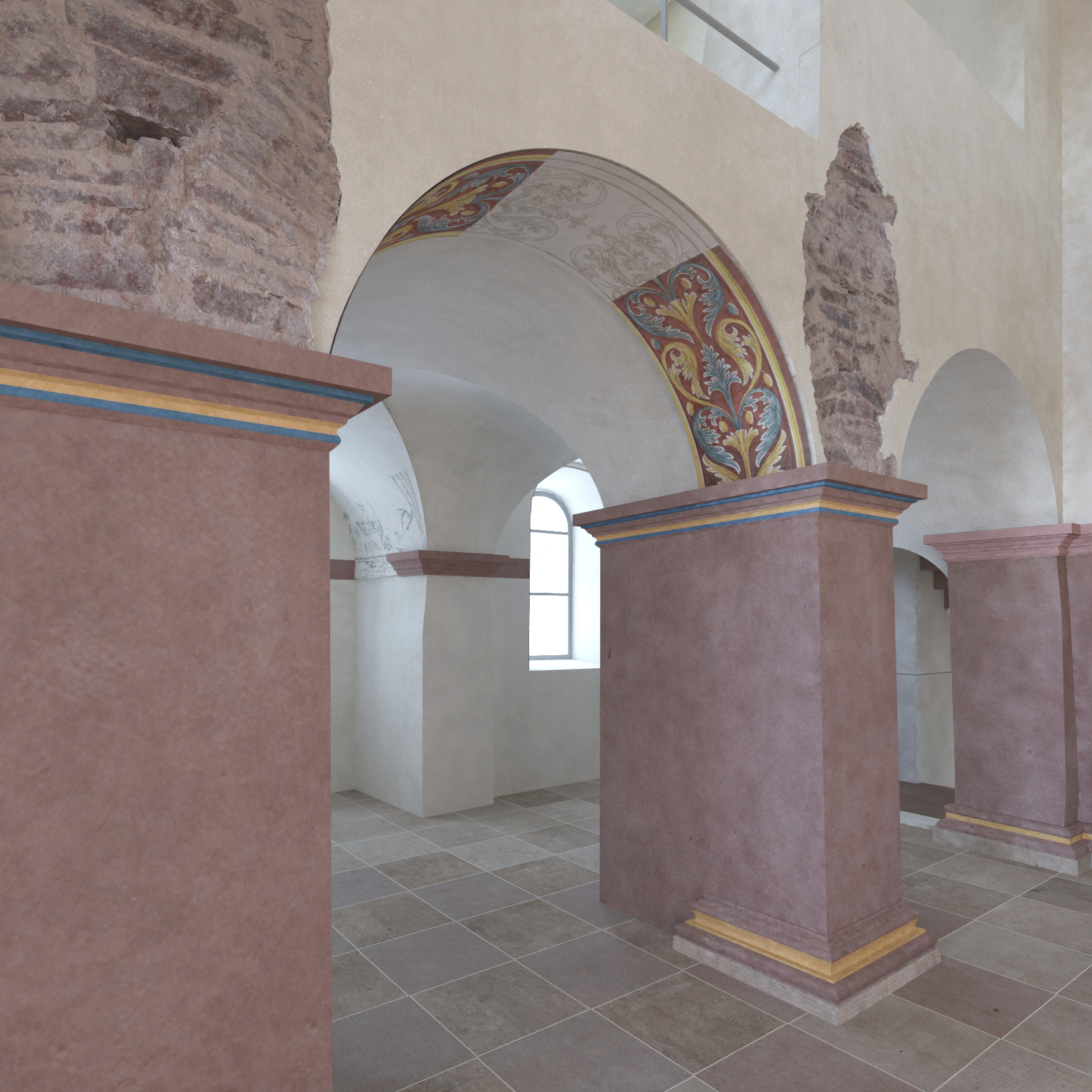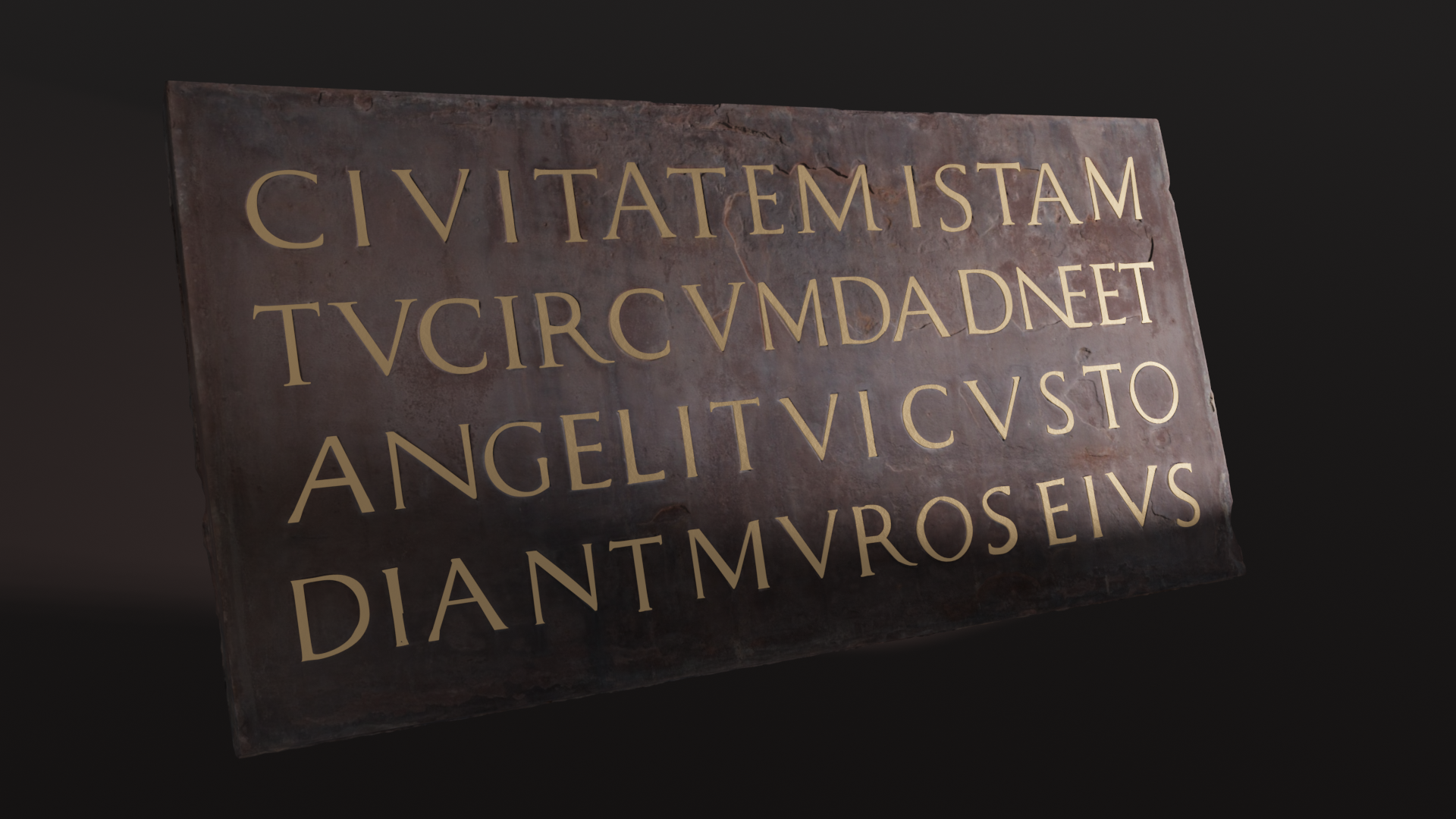The history of the monastery at Corvey can be traced back over a period of 1,200 years, and the old walls of this UNESCO World Heritage Site are still a hive of activity today. Fraunhofer IGD has developed an AR (augmented reality) app to show what it looked like when originally constructed.
Seeing the past as it really was – visitors to historic Kloster Corvey will be able to do just that from April 2023 when the custodians launch a new app developed by a research team at Fraunhofer IGD, which allows users to visualize the Johanneschor (St. John’s Choir) in its original condition. Visitors are issued with a tablet which they point at various features in the room, and the screen then shows the same view as it was centuries before. The curators of the Westwork aim to offer additional inspiration to members of the public who are already interested in the history of the building. Young people in particular are impressed by new technologies that facilitate realistic representations of historical buildings. With the aid of augmented reality, visitors can compare the current state of the Johanneschor with the space as it was originally conceived.
Historic preservation poses challenges for development team
Since 2014, the Carolingian Westwork and the remains of the Civitas have been a UNESCO World Heritage Site. This special protected status posed a number of challenges for the developers of the app. Normally, the team works with markings on the walls to ensure that the visualization lines up correctly. Because of the strict controls that apply to UNESCO sites, nothing could be changed in Corvey, which meant that a certain creativity was called for. Working in collaboration with the curators and the scientific staff at Höxter, project manager Andreas Zapf and his team developed a visualization solution that did not involve making any physical changes. Everything had to be implemented virtually. Consequently, the development team used features on the walls as natural markers and oriented themselves to the existing viewing angles. Zapf explains: “When the user turns the tablet towards one of these features, the image aligns with the surroundings.” The content of the app is based on academic research. Complex architectural visualizations of the original Westwork itself and the Carolingian basilica found in old and updated architectural plans convey an overall picture from the period. Now, courtesy of augmented reality, the baroque church that we see today recedes behind the Carolingian basilica.
 Fraunhofer Institute for Computer Graphics Research IGD
Fraunhofer Institute for Computer Graphics Research IGD

